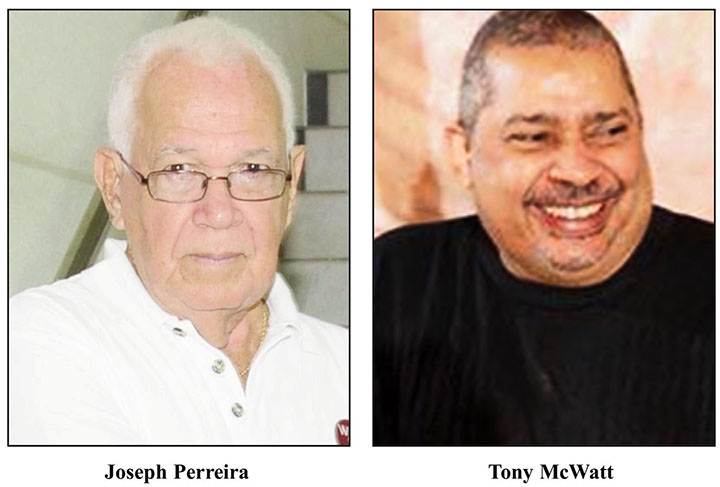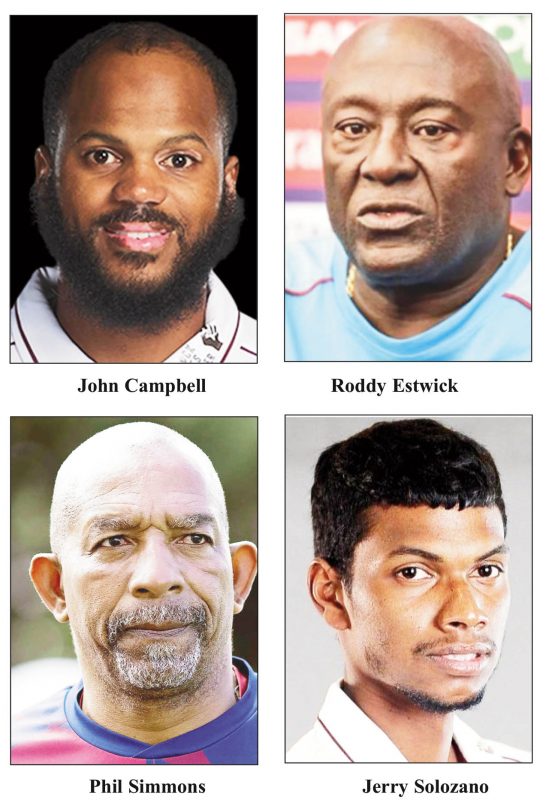By Tony (McWatt) and Reds (Perreira)
One thing that can certainly be said about West Indies cricket is that it now invariably provides much fodder for discussion and debate among its two million-plus estimated fans, wherever in the world they may be. The latest example of which would be the individual and collective performances of both the players and the team as a whole during the T20 series against India, as well as the recently announced 14-member squad for the March 8-12 Antigua hosted Test against England.
In terms of the former, the records will now show that the West Indies suffered yet another series loss. The 0-3 margin was identical to that which had been experienced during the preceding ODI series against the same opponents.
The series statistics tell an even more damning story. Of the 15 batsmen used by the West Indies only two, Nicholas Pooran (184) and Rovman Powell (95), had series aggregates of over 50 runs.
Furthermore, Pooran (61.33), Powell (47.50) and skipper Kieran Pollard (32.00) were the only three batsmen with averages of over 30, although Romario Shepherd’s (29.00) was only just short of that margin.
Kyle Mayers (15.33), Brandon King (13.00), Roston Chase (8.00) and Shai Hope (8.00) all failed miserably as top-order batsmen during the series. Sufficiently so as to now suggest the warranted return of the likes of Evan Lewis, Shimron Hetmeyer and Sherfayne Rutherford, all three of whom for one reason or another were missing from the series.
The West Indies team totals in the three matches played also proved to be wholly inadequate as challenges to India’s very strong batting lineup. The West Indies registered scores of 176 in the first T20, 193 in the second and a meagre 169 in the third. Failing to pass 200 on each and every occasion. India, by contrast, posted scores of 178, 237 and 265 in the first, second and third matches respectively.
There was also no marked improvement in the West Indies’ now well-established tendency to waste scoring opportunities, by having their innings punctuated by high numbers of dot balls. In each of the first and third matches, the number of dot balls faced by the West Indies batsmen was well over 50 per innings.
There wasn’t that much to shout about either in terms of the West Indies bowling. Roston Chase made up for his abject batting failures by capturing six wickets to emerge as the West Indies leading wicket-taker while Haydn Walsh Jr’s., single, four-over spell, produced encouraging returns of 1/30.
Sheldon Cottrell (2/55-7 Econ 7.85), Akeal Hosein (0/64-8.0 Econ.8.0), Jason Holder (1/74-8; Econ 9.25), Fabian Allen (1/28-2.5 Econ 9.88) Romario Shepherd (2/108-10 Econ 10.80), Dominic Drakes (1/37-3. Econ 12.33) and Odean Smith (0/41-3.Econ 13.66) were the other front-line bowlers used by the West Indies with highly unsatisfactory results, in terms of either wickets taken or acceptable economy rates, as the statistics clearly show.
Taken altogether, the overall series result, as well as the unsatisfactory player performances, must now surely raise further questions about the efficiency of the West Indies Phil Simmons led
coaching staff. Both Monty Desai and Roddy Estwick, the respective batting and bowling coaches, have seemed for now far too long a period to be as equally ineffective as Simmons himself. With the 2022 T20 World Cup fast looming on the horizon, Cricket West Indies (CWI) President Ricky Skerritt should, therefore, now be seriously reconsidering his publicly stated indication that his board has no immediate plans to change the Simmons-led coaching staff.
While President Skerritt is busy doing so, both the selections chair, the Rt. Hon Desmond Haynes and his co-selector, Ramnaresh Sarwan, should also be giving their thoughts as to how much longer Kieran Pollard’s tenure as West Indies’ white-ball captain should now continue. Not unlike head coach Simmons, there was very little in Pollard’s India series performances as a captain, batsman or even as a part-time bowler, that would have given just cause for all those who have been clamouring for his head to be effectively silenced.
The West Indies’ next T20 series won’t be until mid-July, at home against Bangladesh. Plenty of time, therefore, for Haynes & Co. to develop their World Cup 2022 plans and ponder their best strategies towards the West Indies’ regaining it’s recently lost status as champions.
In the interim, Haynes and his panel have since turned their attention to the West Indies Test team and its forthcoming home series against England. In that regard, they should be commended for having made a relatively early announcement of the squads for both the first Test and the President’s XI for its match against the English.
We would also hope that both Haynes and Sarwan will actively be sharing their expertise and experience with the West Indies batsmen, as part of their preparation for the Test. With all the players assembled and available in Antigua, it would also be entirely useful for Haynes & Co., in conjunction with CWI’s Cricket Director, Jimmy Adams, to seek the direct involvement of such local legends as Sir Andy Roberts, Sir Vivian Richards and Sir Curtly Ambrose with the selected West Indies players, prior to the Test.
As to the actual squad chosen for the first Test, we have absolutely no issues with 99% of those selected. Our only concern would be in relation to the choice of the John Campbell over Jeremy Solanzo, as Kraigg Brathwaite’s opening batting partner.
The 28-year-old Campbell’s 15 Tests played to date have produced a paltry 640 runs from 39 innings batted at an average of 23.70. He has scored two fifties in those 30 innings and is yet to record a single century. His first-class statistics aren’t impressive either, 4464 runs from 156 innings batted in 82 matches, for a substandard average of 29.76 with only six centuries and 21 fifties recorded. In the four innings he batted during the first two completed matches of this year’s Caribbean Regional Four-Day Tournament, Campbell recorded scores 15, 45, 127 and 16. The 127 was scored off of 228 balls and was punctuated by a dropped catch chance when he was only on 27.
By comparison to Campbell, the two years younger 26-year-old Jeremy Solanzo, made his Test debut in the first match of last year’s Sri Lanka – West Indies Series. He, however, suffered a concussion injury while fielding as Sri Lanka batted first and was unable to take any further part in the Series. His only innings batted since then produced a 1992 ball 66, which included eight fours.
Solanzo’s first-class appearances to date have produced 1752 runs from 74 innings batted in 42 matches played at an average of 24.00. He has scored two hundreds and nine fifties so far in his first-class appearances.
All things considered Haynes & Co’s choice of Campbell over Solanzo as skipper Brathwaite’s opening batting partner would now seem to be a bit of a gamble. One which we hope will pan out favorably, this time around.
About The Writers:
Guyana-born, Toronto-based, Tony McWatt is the Publisher of both the WI Wickets and Wickets monthly online cricket magazines that are respectively targeted towards Caribbean and Canadian readers. He is also the only son of the former Guyana and West Indies wicket-keeper batsman the late Clifford “Baby Boy” McWatt.
Guyana-born Reds (Perreira) has served as a world-recognized West Indies Cricket Commentator for well over fifty years. Reds made his broadcasting debut during the 1971 West Indies-India Test Series, and has commentated on 152 Test matches since then!







